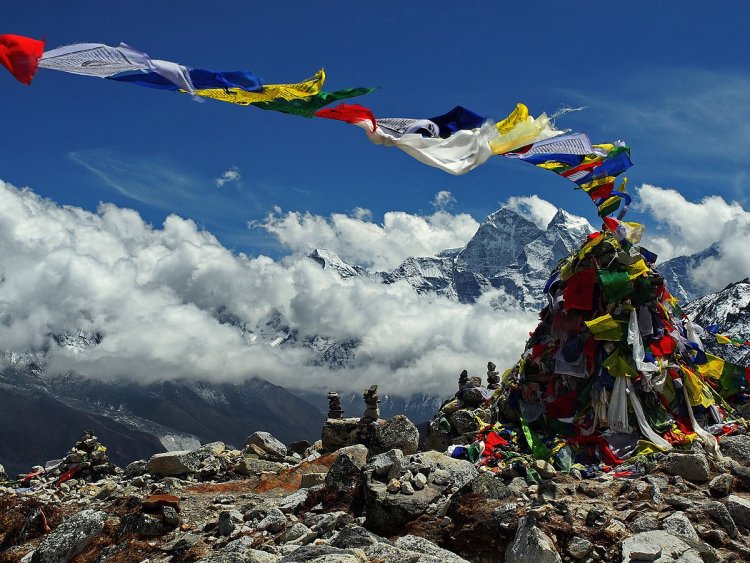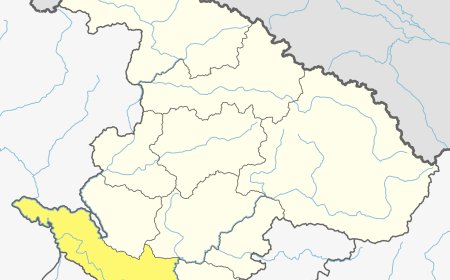National Parks of Nepal: Protecting Wildlife and Promoting Ecotourism
Nepal’s national parks protect unique wildlife and promote ecotourism, highlighting key parks, conservation successes, and ongoing challenges like poaching and habitat loss.

Nepal is well-known for its natural beauty and biodiversity. National parks and wildlife conservation areas play a vital role in protecting the environment and maintaining the various species of flora and fauna available in the country. This paper studies the national parks of Nepal, their contributions towards wildlife, and the problems that these national parks face.
Overview of National Parks in Nepal
There are 12 national parks in Nepal, including several wildlife reserves and conservation areas. Protected areas cover about 23% of the country, with ecosystems ranging from lush forests in the Terai to the rugged mountains of the Himalayas. These national parks are part of the habitats of many endangered species and help promote ecotourism that benefits local people as well.
Major National Parks
1. Chitwan National Park
-
Area: 952.63 sq km
-
Founded: 1973
-
Highlights: This UNESCO World Heritage Site is a habitat for one-horned rhinoceroses and Bengal tigers. Wildlife enthusiasts can enjoy magnificent glimpses of elephants, leopards, and several bird species in this park.
2. Sagarmatha National Park
-
Area: 1,148 sq km
-
Founded: 1976
-
Highlights: This park is home to Mount Everest and contains an incredible landscape with a special high-altitude ecosystem. Its wildlife includes snow leopards, red pandas, and many birds, including the Impeyan pheasant.
3. Langtang National Park
-
Area: 1,710 sq km
-
Founded: 1976
-
Highlights: This park is close to Kathmandu and features beautiful scenery with rich biodiversity. The Himalayan tahr and red panda are the most well-known species of this park.
4. Bardiya National Park
-
Area: 968 sq km
-
Founded: 1976
-
Highlights: Bardiya, with its dense forests, is a habitat for tigers and other creatures like swamp deer and Gangetic dolphins.
5. Rara National Park
-
Area: 106 sq km
-
Founded: 2007
-
Highlights: The park protects Rara Lake, the deepest lake in Nepal, along with varied wildlife that includes musk deer and more than 200 species of birds.
6. Shey Phoksundo National Park
-
Area: 3,555 sq km
-
Founded: 1984
-
Highlights: This is the largest national park in Nepal, established to protect dramatic landscapes extending from lowland forests to high alpine areas, providing shelter for snow leopards and many other endangered species.
Other Major Parks
7. Makalu Barun National Park
-
Area: Roughly 2,330 sq km
-
Founded: 1992
-
Highlights: The park is famous for its outstanding biodiversity, including rare species such as the red panda and several kinds of orchids. It contains dramatic mountain scenery with Makalu, the fifth-highest peak in the world, at its center.
8. Khaptad National Park
-
Area: 225 sq km
-
Founded: 1984
-
Highlights: Situated in the far-western district of Nepal, Khaptad has spiritual significance attached to Khaptad Baba, who meditated here for many decades. More than 567 species of flora have been identified; among these are medicinal herbs. Wildlife includes leopards, Himalayan black bears, and various bird species including the Impeyan pheasant.
9. Banke National Park
-
Area: 500 sq km
-
Founded: 2010
-
Highlights: This park provides critical habitat for tigers and rhinos alongside other flora and fauna within its tropical forests. Banke is part of a more extensive area of protection that merges with Bardiya National Park.
10. Shuklaphanta National Park
-
Area: 305 sq km
-
Founded: 2017
-
Highlights: Largely composed of grasslands and swampy regions, this park is home to a large population of swamp deer as well as occasional sightings of tigers and elephants. It is an excellent place for birdwatching due to its diverse avifauna.
11. Parsa National Park
-
Area: 637 sq km
-
Founded: 1984
-
Highlights: Located in southern Nepal near India, Parsa contains dense forests hosting numerous wildlife species like elephants, tigers, and various bird species. These parks cater to almost all types of domestic and foreign tourists who can engage in trekking, birdwatching, or wildlife safaris.
Nature Conservation
Various organizations in Nepal, including the Department of National Parks and Wildlife Conservation (DNPWC), assist in wildlife conservation efforts. The department was established in 1980 as a government institution that manages protected areas and conducts proper conservation techniques to preserve biodiversity.
Achievements
Nepal managed to raise the one-horned rhinoceros population that was almost extinct. The country has celebrated no poaching incidents regarding rhinos on various occasions. Thanks to effective conservation efforts, there are now more tigers than there were ten years ago.
Ecotourism
Ecotourism has significantly contributed to conservation in national parks. These parks provide opportunities for nature lovers and wildlife enthusiasts while generating revenue that is crucial for reinvestment into conservation efforts. Guided tours and safaris to view wildlife, along with cultural experiences, create economic opportunities for local communities while fostering a love for nature.
Conservation Issues
Despite these success stories, Nepalese national parks face several challenges:
-
The illegal killing of tigers and rhinos remains a constant threat. Habitat destruction due to agriculture and urbanization is a significant driver of biodiversity loss.
-
Climate change variability affects biodiversity through habitat change, thus altering species distributions. Conservationists also point out that changes in legislation have raised concerns.
-
Amendments to the National Parks and Wildlife Conservation Act could pave the way for more development projects within protected areas, potentially disturbing wildlife habitats.
Nepal's national parks are crucial for saving the country's unique flora and fauna while providing opportunities for ecotourism that will benefit local communities. With rising global awareness about the need to protect the environment, there is a pressing need to further strengthen these protected areas through sustainable practices that balance wildlife conservation with community well-being. Continued protection of these natural resources by Nepalese citizens will result in conserving rich biodiversity for future generations.
What's Your Reaction?







































































































